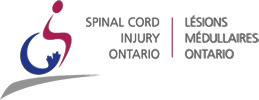The team at Mazin & Associates understands the hardship an individual may face following a serious personal injury. Injured peoples care is something we know all too well. Often times, it is not only the injured individual whose life is adversely affected following an injury. We recognize how family members’ lives are also significantly impacted when a loved one sustains a serious and debilitating personal injury. Keeping this in mind, our experienced staff appreciates the importance of helping an injured person focus on efforts at rehabilitation, rather than cumbersome paperwork and confusing legal rhetoric. Importantly, retaining a lawyer at Mazin & Associates is critical to ensuring that the benefits or damages available to the injured person are sought and collected in full. This is because we have an in-depth understanding of the strategies utilized by insurance companies to minimize payouts to injured persons, and combat those with our own defined, calculated approach to dealing with the tactics employed by insurance adjusters and their lawyers. No stone is left unturned at Mazin & Associates, PC. We fight to recover any and all monies payable to an injured individual.
Perhaps most importantly, at Mazin & Associates, PC we believe that injured peoples care extends far beyond the medical attention or care they require following a serious personal injury. For Mazin & Associates, PC staff, quality of care to our clients is integral to the functioning of the firm. We insist on open lines of communication with all of our clients, addressing promptly all questions or concerns when they arise. We believe that regular communication and complete transparency with our clients is critical to the success of an injured person’s claim against an insurance company. We also appreciate that no two clients are alike, and that every file should be advanced on the basis of that individual’s unique set of circumstances and needs. It is important that our clients understand that the staff at Mazin & Associates, PC are advocates seeking to tell your story. At Mazin & Associates, PC, quality of care also means that we make it our priority to proactively and diligently work on our clients’ files from the very outset. We do not waste time or forgive the stall tactics insurance companies utilize to delay or drag out your claim. We seek to expedite our clients’ files as best we can, without ever compromising the value or integrity of our clients’ claim. Finally, for the team at Mazin & Associates, PC, quality of care also means a fair settlement or resolution of our clients’ claims. We are litigators with a proven track record that demonstrates that we have the gusto and grit to take on big insurance corporations. We are passionate about what we do, and make it our mandate to represent those whose voices would be otherwise quelled by large, intimidating insurance companies.
Let us help you. Contact Mazin & Associates, PC at (416) 625-2122 today.







